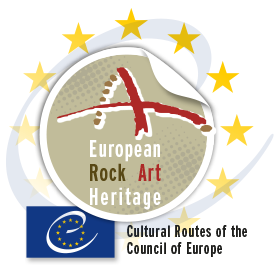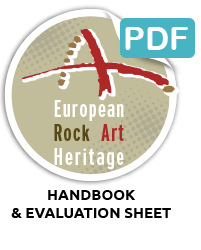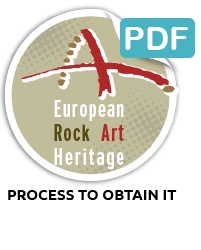The ERAH quality Label
It is a brand which is awarded by the PRAT-CARP Route, with the backing of the Mention of Cultural Route of the Council of Europe, to the rock art sites included in this Route which comply with the recommended practices of the official Handbook for the Certification of Visitable Rock Art Sites.
The names of the certified sites are communicated to the Institute of European Cultural Routes and are inscribed in the register of heritage places of PRAT-CARP CR that can be consulted on the website of the Programme of Cultural Route of the Council of Europe.
The certification “European Rock Art Heritage – Patrimoine Rupestre Européen” aims to become a brand that indicates the quality of the certified sites and which contributes to the consolidation of the “Rock Art” heritage resource. This will be a solid option within the Cultural Tourism offer in the European regions and the countries associated with the I.A. CARP, as a part of their policies in tourism and cultural development and promotion.
The assessment of the rock art sites based on the good practices described in the Handbook will help managers and proprietors of the sites to test their quality and sustainability and achieve, if they comply with the requirements in the handbook, the European certificate of the Council of Europe Cultural Routes Programme for their sites.
In greater detail, the general objectives of this Handbook are:
- 1.To diagnose the potential of the rock art site , formalise the conditions of visits to the site and improve the attention given to visitors.
- 2.To recognise the value of reception, information and interpretation centres for European prehistoric rock art.
- 3.To encourage synchrony between tourists and the cultural management in each of the member regions in terms of this heritage, linking it to local entities and other management bodies working in favour of territorial development.
- 4.To foment networking, designing basic criteria and unifying efforts among all involved in order to create synergy and close collaboration, in which the infrastructures and experiences of each community are at the service of all.
- 5.To create a high-quality cultural tourism product, with an image in common and analogous services, developing strategy of public enjoyment compatible with conservation.
- 6. To identify the PRAT-CARP Cultural Route sites that comply with the above objectives.
The certification of visitable rock art sites in the Council of Europe Cultural Route aims to assess the conditions in which public visits to the sites take place, the services they offer and the visitors’ satisfaction. In this way, the goal is to gradually consolidate the various good practices than help to improve the provision of services at the sites belonging to the Council of Europe Cultural Route Prehistoric Rock Art Trails.
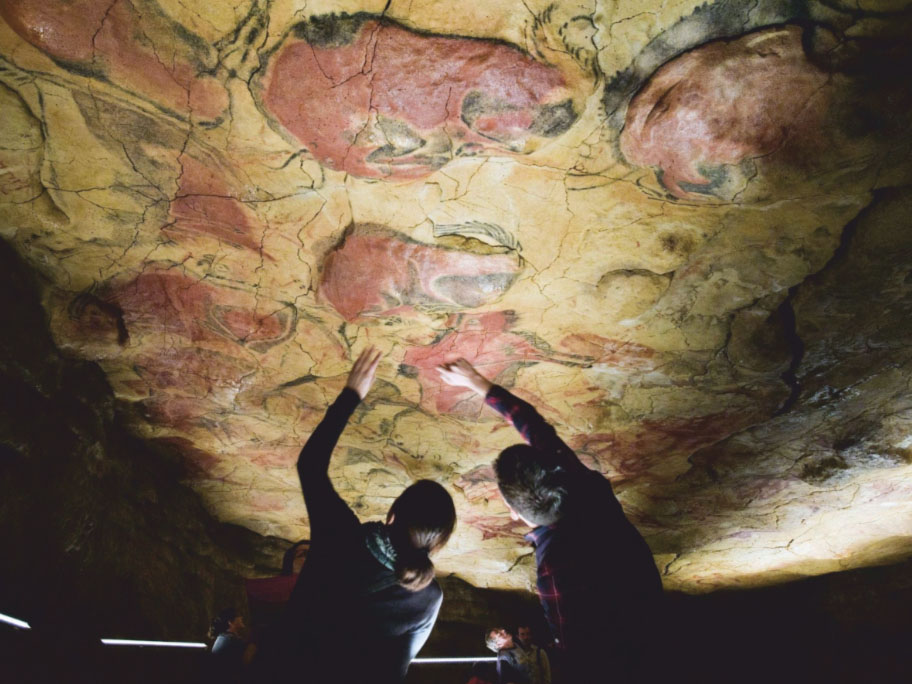 The Handbook is divided into 12 sections, which address different aspects of the provision of services at each of the rock art sites. Each section contains a variable number of standards and good practices:
The Handbook is divided into 12 sections, which address different aspects of the provision of services at each of the rock art sites. Each section contains a variable number of standards and good practices:
- Legal protection: a section with three good practices aimed at guaranteeing the maximum level of protection for the site within heritage and sectoral regulations.
- Physical protection: Two good practices related to the different systems for the physical protection of the sites used by their administrators depending on the nature of the sites.
- Documentation: three good practices aimed at providing the sites with a full and detailed record and documentation of the graphic units and the rock surfaces, including the possibility of three-dimensional recording.
- Access: Eleven good practices aimed at making the arrival to the site and the first contact with it satisfactory for visitors.
- Customer service: Another eleven good practices that assess the attention and contact the visitors receive during the organisation of their visit to the site.
- Visits and activities: a large section with 14 good practices about the provision of services during the visits, either free or guided, and the different activities that are carried out at the rock art site.
- Exhibition space: Ten good practices linked with the different kinds of exhibition spaces that exist, their contents, their preventive maintenance, their safety and cleanliness.
- Complementary services: Seven good practices analysing such services as left-luggage facilities, cafeteria, shop and games, which complement the visits to the site and help to improve the visitors’ experience.
- Sustainability: Four good practices associated with the sustainability of the rock art and the adoption of criteria respecting the natural environment.
- Personnel: Seven good practices related to the training, qualifications and appearance of the staff working at rock art sites.
- Visitors: Six good practices reviewing visitors’ satisfaction, the way of dealing with possible complaints and suggestions, and the different means of communicating with users.
- Brand: Five good practices related to the management of the brand and the consolidation of quality standards.

